In the latest climate change news, ancient underwater landslides could help us understand tsunami risks in the Middle East, NASA now has a ‘Vanilla’ ice drone to study the Arctic, and lake temperatures are rising. Plus, we bring you joy with this week’s What’s Up and a review of Starlight Coke.
Podcast
Show Notes
The black hole that wasn’t
- ESA press release
- “HR 6819 is a binary system with no black hole,” A. J. Frost et al., 2022 March 2, Astronomy & Astrophysics
Neutron star caught shredding its neighbor
- University of Southampton press release
- “A persistent ultraviolet outflow from an accreting neutron star binary transient,” N. Castro Segura et al., 2022 March 2, Nature
Ancient landslide warns of future hazards
- University of Miami press release
- “Tsunamigenic Potential of an Incipient Submarine Landslide in the Tiran Straits,” Sam J. Purkis et al., 2022 February 3, Geophysical Research Letters
Vanilla ice drone, baby
- NASA Goddard press release
Lake heatwaves stress aquatic life
- AGU press release
- “Severe Lake Heatwaves Attributable to Human-Induced Global Warming,” R. Iestyn Woolway, Clément Albergel, Thomas L. Frölicher, and Marjorie Perroud, 2022 February 24, Geophysical Research Letters
Yet another batch of Starlink
- SpaceX mission news
What’s Up: How to find Polaris
- Use Big Dipper to find North Star (EarthSky)
- “Parallactic Motion for Companion Discovery: An M-Dwarf Orbiting Alcor,” Neil Zimmerman et al., 2010 January 6, The Astrophysical Journal
Review: Starlight Coke
Transcript
It’s a star-eat star universe out there, and today, we bring you two stories on what happens when this vampiric behavior gets out of hand.
And our own planet Earth joins in with its own destructive vibe with stories looking at historic landslides and the slow self-destruction of arctic ice.
But it’s not all doom and gloom! We’re going to round out today’s episode with a review of Coca-Cola’s new space-flavored “Starlight” drink and some recommendations on cool things to look up at while drinking down the soda.
All of this and more is coming at you, right here on the Daily Space.
I am your host Dr. Pamela Gay.
And I am your host Beth Johnson.
And we’re here to put science in your brain.
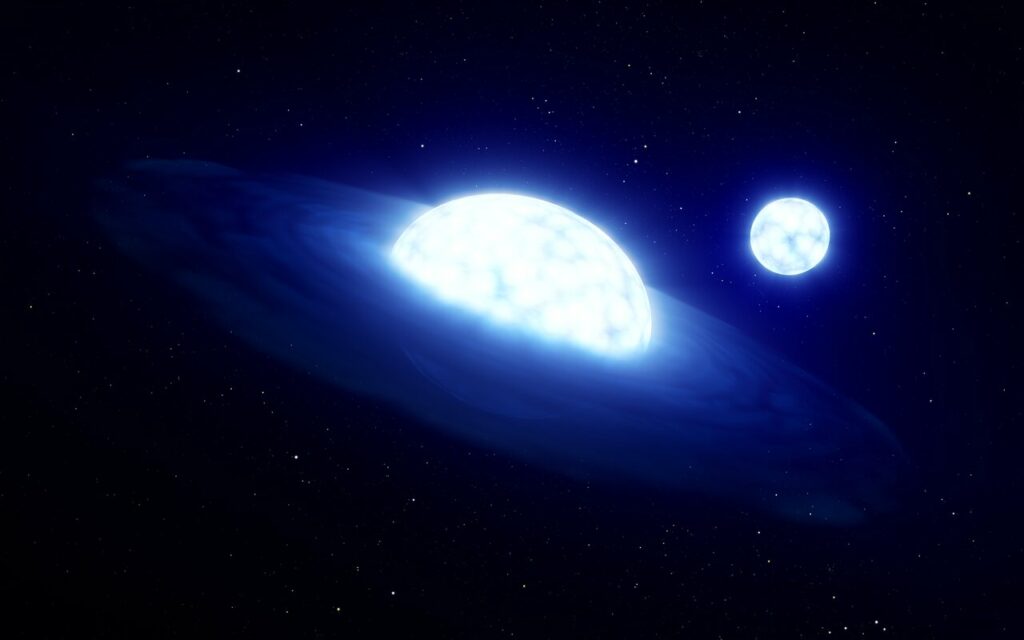
Sometimes, what you see is not what you think it is. This basic statement can apply to anything, from the YouTube video of a piece of fruit that turns out to be cake to the discovery of a black hole that turns out to just be a naked stellar core.
Back in 2020, researchers led by Thomas Rivinius published what they thought was the discovery of a black hole in a system along with two other stars. This data was based on periodic observations with the European Southern Observatory’s 2.2-meter telescope in Chile, which sampled its forty-day period. The data seemed to indicate that there was a dense object, orbited every forty days by a star, with yet another star even further out.
But the thing with data like this is that sometimes, there is more than one equally valid way to understand the data, and when Ph.D. candidate Julia Bodensteiner re-analyzed their observations, she came up with a different possibility. What if there are only two stars and no black hole, and one of the stars has had its atmosphere pulled off?
I’m amazed at the creativity involved in this “what if.” While we know stars regularly cannibalize one another, we’ve never actually seen a system at the point in its evolution where one of the stars has been completely stripped down to its core.
Bodensteiner’s team in Belgium reached out to Rivinius’ team in Chile to try and figure out the truth, and the two teams realized they couldn’t make progress with their existing data, so together they requested time on the many meter telescopes of the combined Very Large Telescope Interferometer (VLTI). According to collaborator Dietrich Baade: The VLTI was the only facility that would give us the decisive data we needed to distinguish between the two explanations.
Rivinius went on to explain: The scenarios we were looking for were rather clear, very different, and easily distinguishable with the right instrument. We agreed that there were two sources of light in the system, so the question was whether they orbit each other closely, as in the stripped-star scenario, or are far apart from each other, as in the black hole scenario.”
And this suite of bigger telescopes had the answer. Research Abigail Frost explains: [The instrument] confirmed that there was no bright companion in a wider orbit, while [the instrument’s] high spatial resolution was able to resolve two bright sources separated by only one-third of the distance between the Earth and the Sun. These data proved to be the final piece of the puzzle and allowed us to conclude that HR 6819 is a binary system with no black hole.
This is how science is supposed to work: people analyze data, other folks work to replicate their work, and when discrepancies are found, more data or better tools are used to move past those discrepancies.
And while at first glance, it seems like a black hole had to be more interesting, the reality is that what they found is short-lived and rare, and while we have found black holes, we had never found the core of a dead star. As Frost puts it: Catching such a post-interaction phase is extremely difficult as it is so short. This makes our findings for HR 6819 very exciting, as it presents a perfect candidate to study how this vampirism affects the evolution of massive stars, and in turn the formation of their associated phenomena including gravitational waves and violent supernova explosions.
These results are published in Astronomy & Astrophysics, and the paper was led by Frost.
Look, sometimes, a star just has to eat another star. These things happen. These things happen a lot.
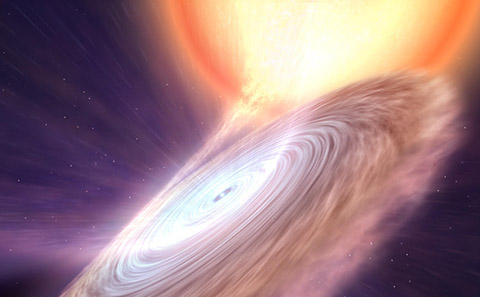
In a completely different part of the sky, a completely different team discovered a vampiric neutron star casually shredding its neighbor. As stars do.
In this case, researchers were looking at a known binary star system, Swift J1858, that gives off blasts of X-ray light. Using a combination of the Hubble and XMM-Newton space telescopes, the Very Large Telescope, and the Spanish Gran Telescopio Canarias, they captured exceptionally good data of a recent eruption and were able to untangle some of the weird physics that goes into stars eating stars.
Lead author Noel Castro Segura explains: Eruptions like this are rare, and each of them is unique. Normally they are heavily obscured by interstellar dust, which makes observing them really difficult. Swift J1858 was special because even though it is located on the other side of our galaxy, the obscuration was small enough to allow for a full multiwavelength study.
And what they found is a messy eater. While the neutron star was pulling some material directly off its neighbor and onto its surface, the gravitational pulls and light pressure pushes of the system, mixed with a large dose of angular momentum, caused other material to get stripped off and flung into space at high speeds. According to a release on this work: …the team [was] able to study the temporal evolution of the gas that flows out. They found that the warm wind was not affected by the strong variations in the brightness of the system. The absence of such a response had previously been an unconfirmed theoretical prediction based on sophisticated simulations.
The science around this work is awesome, but what may be more amazing is the collaboration this research required. As collaborator Castro Segura explains: In this research we combined the unique capabilities of the HST with the best ground-based telescopes, such as the VLT and GTC, to obtain a complete picture of the dynamics of the gas in the system, from the near-infrared to ultraviolet wavelengths. This allowed us to unveil for the first time the true nature of these powerful outflows.
Altogether they coordinated ten different telescopes to see this one target of opportunity.
That phrase, “target of opportunity”, has a special meaning in astronomy. It refers to things that just happen when they happen that require researchers to stop whatever they are doing to switch over and look at that one special thing. Lead author Nathalie Degenaar stated: Designing such an ambitious observing campaign – built around the best telescopes on Earth and in space – was a huge challenge. So, it is incredibly exciting that all this work has paid off and allowed us to make a key discovery that would not have been possible otherwise.
The results of this work are published in Nature, and we expect this is just the first of many papers that will come from this amazing data set.
From cannibalistic stars, we now turn our sites on our own planet Earth and look at the ways it likes to also sometimes wipe things out.
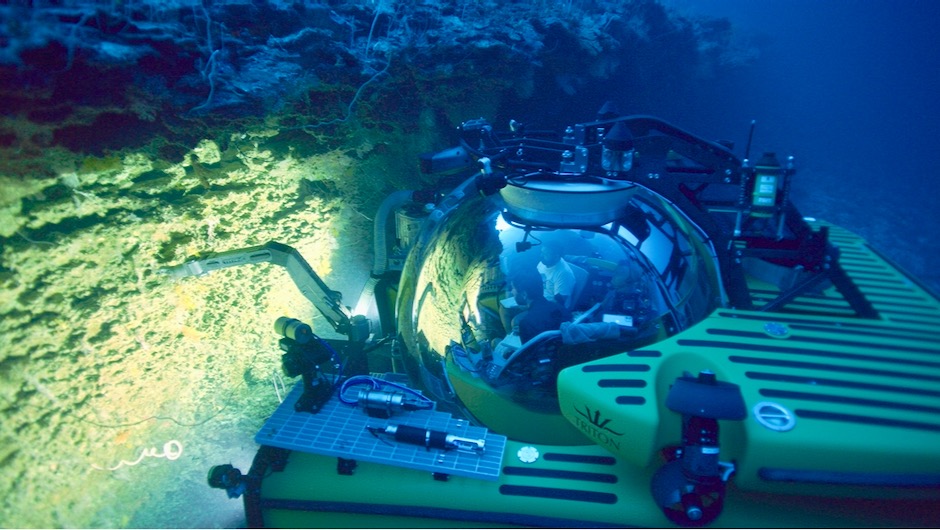
Geologists recently discovered evidence of an underwater landslide in the Red Sea which could have implications for coastline development in the region.
The Red Sea is a geologically active area known as a rift zone, where two plates, the African Plate and the Arabian Plate, are pulling away from each other, causing the Earth’s crust to thin and allowing molten rock to rise. The Red Sea and the Tiran Strait in particular are prone to landslides because the sides of the seabed are steep, tilting over thirty degrees.
The newly discovered landslide happened a blink of an eye ago in geologic time, less than 500 years. And there is further evidence that this landslide spawned a tsunami. Even more worryingly, the slide stalled part of the way down. If it shifts more, it could produce another tsunami which would devastate the countries in the Tiran Strait – Saudi Arabia and Egypt. One city in Saudi Arabia, Sharm El Sheikh, is in particular danger, as it is only 4.5 kilometers from the site of the original landslide. The scientists were able to determine from a simulation that a tsunami from a follow-up landslide could produce a 20-meter high wave, twice as high as that partial landslide a half-millennium ago.
And because this region is geologically active, an earthquake could set off another landslide and cause a slope failure in other areas of the Red Sea, so the study authors advocate for strong early warning systems in the event of an earthquake and tsunami in the region. Because of the relatively narrow width and length of the Red Sea, a tsunami in the region would make landfall quickly, but some warning is better than none and can save lives.
This work was done by a team from the University of Miami and published in the journal Geophysical Research Letters with first author Sam Parkis.
From underwater submersibles to arctic drones, scientists are finding ways to investigate all matter of hazards here on our planet. Which is a good thing since we’d like some advance warning of danger, please.
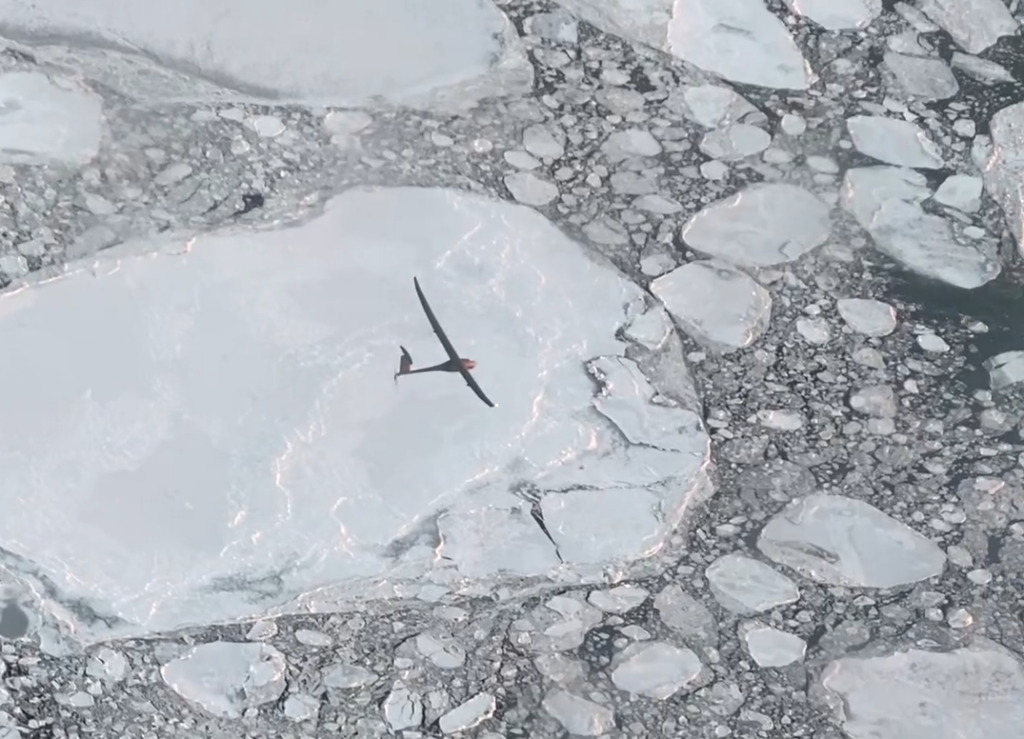
However, I’m still chuckling over the name of this new NASA drone that is studying sea ice in the Arctic – Vanilla. Because it’s a Vanilla ice drone. But while the name may be a little bit silly and tongue in cheek, the science is real and important. Vanilla uses an onboard radar instrument to measure how much snow is accumulating on top of the sea ice. It turns out, a layer of snow on top of the ice makes it very difficult for NASA’s satellites to determine the thickness of the ice itself, and drones like Vanilla could improve our measurements.
Of course, it’s not exactly easy to fly a drone in the cold Arctic air, especially for longer periods of time, but Vanilla has successfully flown for six hours and more than 220 kilometers over ocean and sea ice.
The drone launched from Deadhorse, Alaska, which is on the very northern coast of the state and borders the Arctic Ocean. To make sure the drone was cold weather-safe, Vanilla includes heating systems and a special anti-icing coating. It also has a diesel engine which helps regulate heat and doesn’t suffer from the usual cold-weather battery issues we see with cars. Project lead Brooke Medley notes: Drones have come a long way, enough that they can start to be more than just quadcopters flying locally and looking at your neighborhood. Flying drones is ultimately greener and safer than flying large planes, so this checks a lot of boxes.
Drones aren’t just for air shows and package delivery, everyone. They’re also for vanilla ice.
And going green isn’t just good for drones, it’s good for the environment. Which needs help.
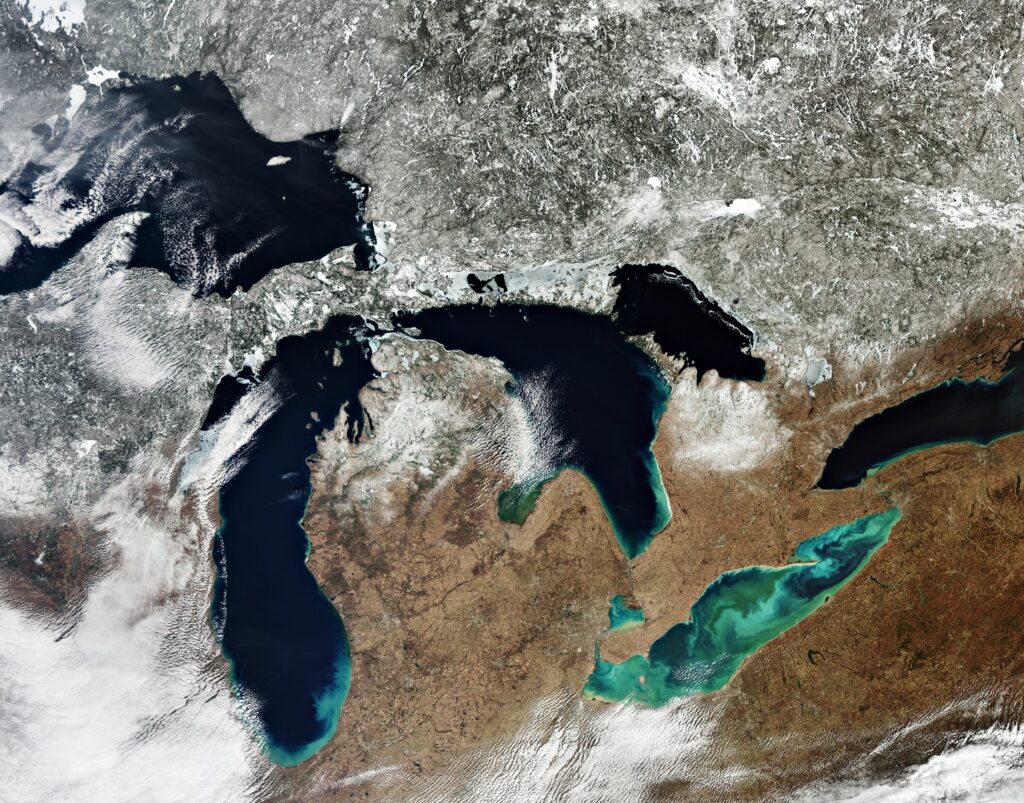
In a new paper published in Geophysical Research Letters, scientists analyzed more than twenty years’ worth of data on lake surface temperatures from 78 lakes around the world. Each lake was large enough to have had multiple samples taken from different locations. The team wanted to understand how often lake heat waves occur and then how much anthropogenic climate change has altered that occurrence rate. And the news isn’t good, to no one’s surprise.
Severe lake heat waves are now more than twice as likely to happen than they were in pre-industrial times. And those heat waves change a lake’s water conditions, causing stress for plants and animals, possibly leading to algae blooms, and just generally creating water quality problems. Lead author R. Iestyn Woolway, a climate scientist at Bangor University in Wales, explains: What really stood out was the magnitude of human contribution: Most of the severe lake heat waves we looked at had a significant anthropogenic imprint. There’s no escape for aquatic organisms when they are exposed to these extreme temperatures.
And that ‘twice as likely’ occurrence rate is what’s going on now. If we reach the 1.5 degrees Celsius of global warming laid out as a best-case scenario in the Paris Agreement, the lake heat waves are three times more likely. And if the temperature change is more on the order of 3 degrees Celsius, which is where we’re headed without a larger reduction in greenhouse gas emissions, those heat waves become 25 times more likely.
All of this is to say that global leadership needs to come together and find ways to prevent the worst-case outcome from happening, or we’re going to see a severe change in lake chemistry and depth as the Earth’s temperatures continue to climb.
I know that’s some rough news in a world of rough news. So let’s watch a rocket booster landing. Erik?
Before we get to What’s Up, we have to talk about the rocket launch from this morning. SpaceX Falcon 9 booster 1060 launched from LC-39A and sent 47 Starlink satellites into orbit on its 11th flight. It successfully landed on the droneship Just Read The Instructions. That landing video was pretty and we need joy, so here it is. [Ed. note: You can find the link to the booster landing in our show notes.]
And now I’m going to teach you how to use the Big Dipper to find some really cool and useful stuff in our night skies.
What’s Up
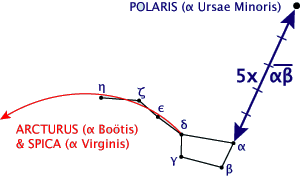
One of the most useful asterisms in the night sky is the Big Dipper in Ursa Major, known by many different names around the world: the Plow in the UK, the Big Rudder in Vietnam, and the Caribou to the Inuit, to name just a few. Using its stars, you can guide yourself to many of the fascinating deep sky objects you might want to see in your binoculars or telescope.
The Big Dipper itself has a binary star, Mizar and Alcor, which is seen as the middle star in the handle of the Dipper. On exceptionally clear nights, you may be able to split, or resolve, the pair of stars with the unaided eye. In the pre-telescope era, this binary was used as a test of eyesight.
Early telescopic observations of Mizar revealed that it was a binary star, and even more powerful telescopes revealed that each component of the binary system was itself a binary system. Also, Alcor is a binary. So there are a total of six stars in the area, but you will need a telescope to see more than two of them. I did a simulation using Stellarium and you can split Mizar itself, by using a 14-inch (350-millimeter) telescope at several hundred power. So it’s possible but not easy.
Now if you want to use an equatorial mount effectively, you need to know where Polaris is, as Polaris marks the north celestial pole. I wouldn’t recommend an equatorial mount for beginners or visual observing in general as they are non-intuitive, and the ones that come with beginner telescopes are, well, flimsy. But they are essential for astrophotography if you want to get long exposure pictures without star trailing.
The Big Dipper can also help you locate Polaris easily. Look north in the night sky to find the Big Dipper. Then find the two stars opposite the handle – Merak and Dubhe – and follow a line heading away from the star in the bottom right about three times the distance between those two stars. Or just away from the horizon if that’s easier. As the night goes on, the sky itself will appear to rotate counterclockwise around Polaris. Early in the evening, it will be straight up from Dubhe. Later in the evening, Polaris will be towards the horizon from two stars in the Dipper, and just before sunrise, you’ll need to look towards the east to find it.
The Big Dipper is useful for finding more than just Polaris. There is a classic mnemonic “arc to Arcturus, speed to Spica” where one follows the direction of the handle towards those stars. Arcturus is in the constellation Böotes which is kinda boring, but Spica is in Virgo which is rich in deep-sky objects. On either side of the star at the end of the handle, Alkaid, are the galaxies M101 and M51. The equally impressive galaxies M81 and M82 are found simply by following a diagonal line from the bottom left to top right star and continuing up twice that distance.
We’ll have links to star charts for the Big Dipper and Virgo in our show notes, which you can find at DailySpace.org. Print one out, head outside, and look up.
And now, a review of a limited-edition flavor of Coke.
Review

Because we are doing a special show tomorrow about the Ukraine-Russia war, we are bringing you our usual review today. And today, well, we wanted to bring you joy, so we bought you a Coke.
Well, really, we bought ourselves a Coke. Specifically, TinyIntern and I each tried the latest special release from Coca-Cola — Starlight Coke. Per the very lovely cans, decorated with a bubbly-yet-starry background, these new versions are “space” flavored. [Ed. note: CosmoQuest received no compensation for this review and paid for the product out of pocket.]
Now, if you like me were thinking, “What? Does it taste like burnt steak?”, the answer is no. No, it very much does not. To me at least, it tastes like some sort of sweet berry-flavored Coke, while Tiny describes it as “Coca-Cola Code Red.” It’s slightly unusual but good!
Per a press release from Coke: Its taste includes additional notes reminiscent of stargazing around a campfire, as well as a cooling sensation that evokes the feeling of a cold journey to space.
I’m not entirely sure how that tastes like space, but we can at least confirm the campfire stargazing tie-in, via Tiny’s experience. It may be a brand-new take on Coke’s classic flavor, but she likened the campfire notes to the “heady, smoked foundation of an excellent old-fashioned — albeit, one without the alcoholic bite of the classic cocktail.”
On top of a limited-edition flavor, Coca-Cola wanted to make this release even more out-of-this-world, so they’ve added some augmented reality (AR) features that you can access by scanning the can or bottle. While I could use the QR code to get to the website, launching the actual AR experience didn’t work for me. I could, however, get the ASMR to work, so if you’re intrigued by sitting and listening to the sounds of soda fizzing away in a glass with ice and some background space noises, have fun!
In the meantime, we intend to enjoy what’s left of our 7.5-ounce cans. It’s a cute serving of a cute soda. Could we really ask for more?
This has been the Daily Space.
You can find more information on all our stories, including images, at DailySpace.org. As always, we’re here thanks to the donations of people like you. If you like our content, please consider joining our Patreon at Patreon.com/CosmoQuestX.
Credits
Written by Pamela Gay, Beth Johnson, Erik Madaus, Gordon Dewis, and Lindsey Odom
Hosted by Pamela Gay, Beth Johnson, and Erik Madaus
Audio and Video Editing by Ally Pelphrey
Content Editing by Beth Johnson
Intro and Outro music by Kevin MacLeod, https://incompetech.com/music/


 We record most shows live, on Twitch. Follow us today to get alerts when we go live.
We record most shows live, on Twitch. Follow us today to get alerts when we go live.